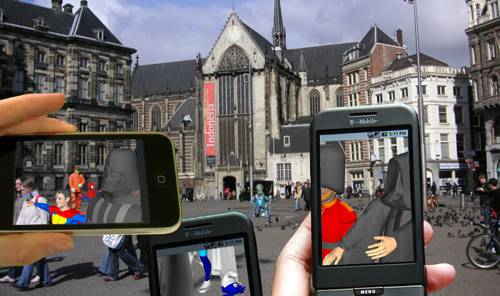
FAQ About The Role of Augmented Reality in Theatre Productions

What is augmented reality in the context of theatre?
Augmented reality (AR) in theatre refers to the integration of digital elements into live performances through technology. This can include overlaying computer-generated images, sounds, or other sensory inputs onto the physical stage environment, enhancing the visual and immersive experience for the audience. AR can be achieved using various devices, such as AR glasses or screens.

How does augmented reality enhance storytelling in theatre?
Augmented reality enhances storytelling in theatre by adding layers of digital content that complement and expand on the live performance. It allows creators to visualize complex or fantastical scenes that would be difficult to produce physically. AR can simulate environments, manipulate settings in real-time, and introduce animated characters or special effects, making the narrative more dynamic and engaging.

What are some examples of augmented reality being used in theatre productions?
Examples of augmented reality in theatre include productions where digital backgrounds or characters are projected onto the stage, allowing performers to interact with them in real time. One notable example is the Royal Shakespeare Company's use of AR to display virtual settings and characters, providing a magical experience that traditional sets couldn't achieve alone.

How does augmented reality improve audience interaction in theatre?
Augmented reality improves audience interaction by offering a more immersive experience. Audiences can experience elements of the story in a 360-degree view or interact with the performance through their own devices. This level of interactivity can make spectators feel more connected to the narrative and the characters, transforming them from passive viewers into active participants.

What are the technical requirements for implementing augmented reality in theatre?
Implementing augmented reality in theatre requires a combination of specialized hardware and software. Hardware might include high-resolution projectors, AR glasses, or digital screens, while software is needed to design and run AR applications. Additionally, precise coordination and skilled technicians are necessary to seamlessly integrate AR elements into live performances.

What challenges do theatre productions face when using augmented reality?
Theatre productions face several challenges when using augmented reality, including high costs, technical difficulties, and the need for specialized knowledge in both theatre and digital tech. Coordinating AR elements with live performance timing is complex and may require extensive rehearsals and technical support. There's also the challenge of ensuring the technology doesn't overshadow the performance itself.

Can augmented reality be used for all types of theatre productions?
While augmented reality has the potential to be used in various types of theatre productions, it may not be suitable for all. It works best in productions where digital enhancement can strengthen the narrative or visual impact. However, traditional plays or those relying heavily on human emotion and interaction may not benefit as much from AR technology.

How does augmented reality affect the role of actors in theatre?
Augmented reality affects the role of actors by introducing new elements they must interact with, such as digital characters or changing environments. Actors must adapt to working with virtual counterparts and ensure their performance remains believable alongside the AR technology. This may require additional skills and rehearsals to master the integration seamlessly.

Is augmented reality in theatre productions accessible to all audiences?
While augmented reality can greatly enhance theatre experiences, it may not be accessible to all audiences due to several factors. These include the cost of technology, availability of AR-equipped venues, and potential sensory overload for some viewers. Efforts are being made to make AR more inclusive, ensuring everyone can appreciate its benefits.

What impact does augmented reality have on the traditional set design of theatre productions?
Augmented reality can significantly impact traditional set design by reducing the need for physical sets. Digital landscapes and set pieces can replace or complement conventional designs, offering flexibility and innovation. This can lead to cost savings and allow for more imaginative and dynamic stage environments that can change instantly.

How does augmented reality contribute to the overall production value of a theatre performance?
Augmented reality contributes to the overall production value by adding a layer of sophistication and modernity to theatre performances. It can create visually stunning scenes, improve audience engagement, and attract a broader audience, particularly those interested in cutting-edge technology. This enhancement can lead to greater public interest and increased ticket sales.

Are there any successful theatre productions known for using augmented reality?
Yes, several theatre productions have successfully incorporated augmented reality. For example, the production 'The Tempest' by the Royal Shakespeare Company used AR to create dynamic visuals and characters. Such productions have been praised for their innovative approach and ability to create an immersive audience experience.

What are the potential future trends for augmented reality in theatre?
Future trends for augmented reality in theatre may include more personalized audience experiences, where viewers can customize aspects of the performance through AR apps. Increased collaboration between tech companies and theatre creators could expand AR's presence in mainstream productions, leading to new storytelling techniques and experiences.

How has augmented reality changed the audience's expectations of theatre productions?
Augmented reality has elevated audience expectations by promising more immersive and interactive experiences. Spectators now look forward to visually compelling and innovative performances that make full use of modern technology. This shift may pressure traditional productions to adapt and incorporate technology to meet these rising expectations.

What are the cost implications of using augmented reality in theatre productions?
Using augmented reality in theatre productions can be costly due to the need for specialized equipment and software, as well as the expertise required to design and execute these technologies. However, costs may decrease over time as AR technology becomes more mainstream. However, productions should weigh the initial investment against the potential for increased ticket sales and audience engagement.

Can augmented reality replace traditional theatre performances?
Although augmented reality offers exciting new possibilities for theatre, it is unlikely to replace traditional performances entirely. The craft of acting, storytelling, and live interaction provides a unique and irreplaceable experience. Rather, AR serves as a tool that can enhance and complement traditional theatre, offering new dimensions and perspectives.

How do theatre directors manage the integration of augmented reality into their productions?
Theatre directors manage the integration of augmented reality by collaborating closely with technical experts and designers to ensure that digital elements align with the production's artistic vision. They must balance technology with live performance, often requiring additional planning, rehearsals, and testing to ensure that AR enhances rather than detracts from the experience.

What role do audiences play in the success of augmented reality in theatre?
Audiences play a crucial role in the success of augmented reality in theatre. Their reception and feedback can guide future innovations and applications of AR technologies. Positive engagement and excitement from audiences can encourage more productions to explore AR, while constructive criticism helps creators refine and improve the technology's use.

How does augmented reality compare to virtual reality in theatre?
Augmented reality and virtual reality offer different experiences in theatre. Augmented reality enhances the live performance by adding digital layers, while virtual reality can create fully immersive, standalone environments that may not involve live actors. AR maintains the live aspect of theatre, allowing audience interaction with both real and virtual elements, whereas VR might offer a completely separate digital experience.

What skills are necessary for theatre professionals to work with augmented reality?
Theatre professionals looking to work with augmented reality need a blend of traditional theatre skills and technical knowledge. Understanding stage dynamics, timing, and acting must be complemented by familiarity with digital tools and AR technologies. This includes learning to operate or coordinate with AR software, collaborate with tech teams, and conceptualize performances that creatively integrate augmented elements.
